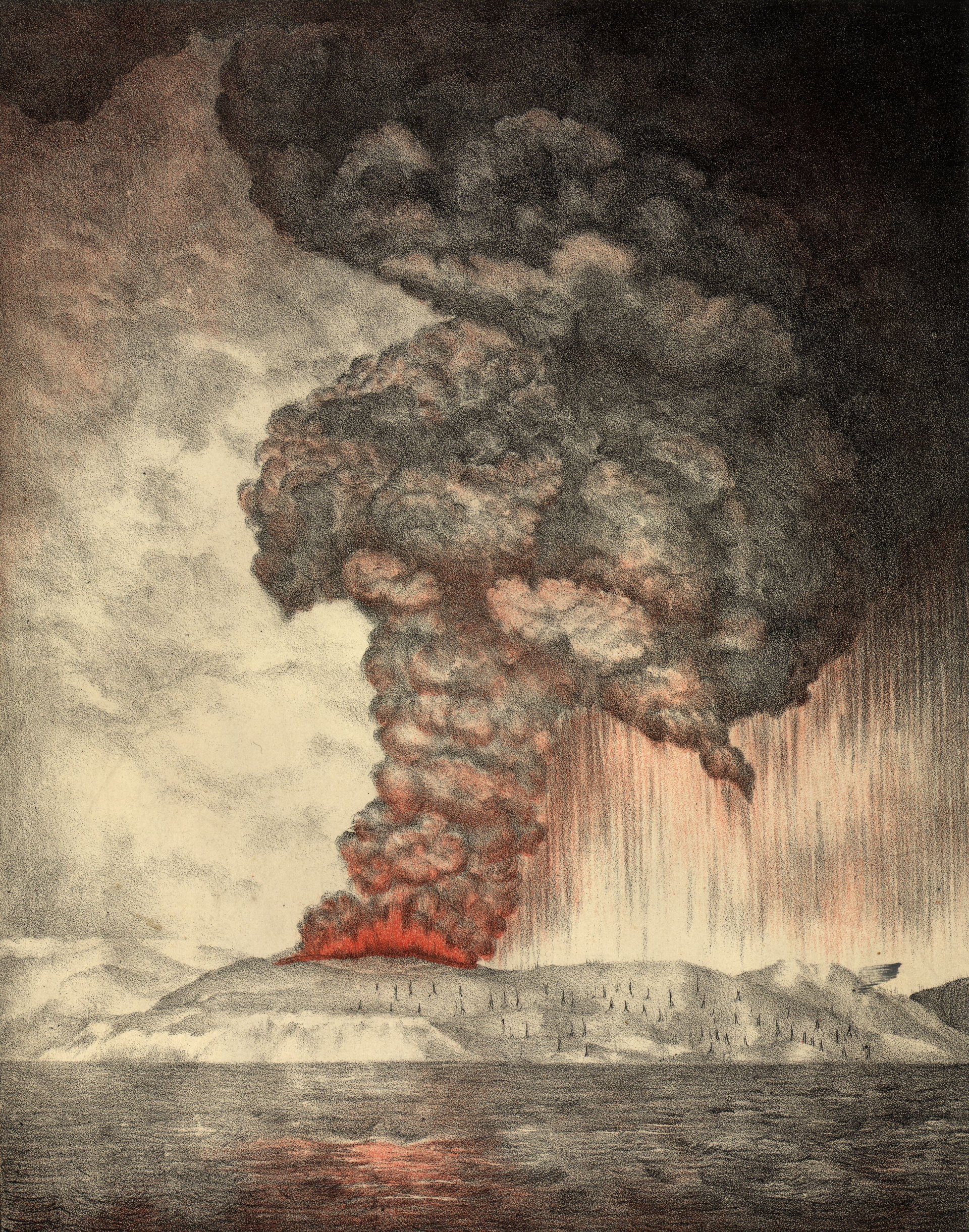In 1883, Krakatau’s explosion caused a century of climate chaos
More than 370 people have been killed and almost 850 more injured after a deadly tsunami struck Indonesian coastal towns in the Sunda Strait without warning on Saturday (Dec. 22). It’s believed the waves were caused by undersea landslides, precipitated by the volcanic island Anak Krakatau, also in the Sunda Strait. The island’s name—which means “child of Krakatau”—comes from the volcano beneath it.


More than 370 people have been killed and almost 850 more injured after a deadly tsunami struck Indonesian coastal towns in the Sunda Strait without warning on Saturday (Dec. 22). It’s believed the waves were caused by undersea landslides, precipitated by the volcanic island Anak Krakatau, also in the Sunda Strait. The island’s name—which means “child of Krakatau”—comes from the volcano beneath it.
Krakatau has been extremely active for hundreds of years. In August 1883, it erupted to stupendous effect, obliterating its three islands, and killing tens of thousands of people.
The sound of the eruption alone is said to have been the largest heard in modern history. The noise was heard as far as 3,000 miles (4,800 kilometers) away on the Indian Ocean island of Rodrigues, near Mauritius, where it was said to come “from the eastward, like the distant roar of heavy guns.” In context, that’s the equivalent of a blast in Dublin being heard in New York. Half the crew of British ship some 40 miles away reported having their ear drums “shattered”—if they had been closer, they might well have been killed by the force of the sound alone.
As with this weekend’s blast, the most deadly aspect of the 19th-century eruption was the subsequent tsunami. In 1883, waves reached over a hundred feet (30 meters) in height, sweeping 165 coastal villages and settlements out to sea. The wave is said to have traveled around the globe three and a half times at astonishing speed, causing tsunamis as far as South Africa and flinging huge chunks of coral reef onto the land as it went. Some of these sections of coral weighed as much as 600 tons (about 540,000 kilograms).
The official death toll recorded by Dutch authorities was 36,417, though some modern estimates put it at three or four times the total. There was a lasting effect on the world’s climate, too: aerosols emitted into the atmosphere by the blast led global air temperatures to drop by as much as 2.2 degrees Fahrenheit (1.2 degrees Celsius). According to a 2006 article in the journal Nature, the volcano caused oceans to cool for as much as a century, offsetting the effect of human activity on ocean temperatures. If the volcano had not erupted, the authors argue, our sea levels might be much higher than they are today.
Though tragic, this weekend’s eruption is comparatively small—even as the super-volcano at its heart continues to bubble away. We’re unlikely to see an eruption of 1883’s proportions in the very near future, though it’s simply a matter of time.